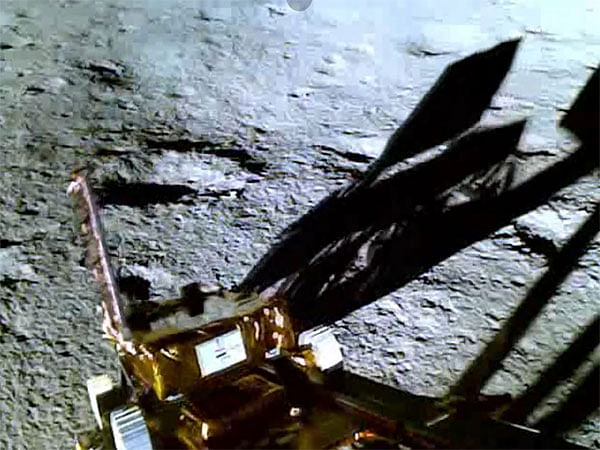New Delhi: The alternative landing site for India’s third lunar mission, Chandrayaan-3, could become a potential spot for future lunar landings and experiments, an analysis by Ahmedabad’s Physical Research Laboratory (PRL) has found.
In their study published in the journal Current Science last week, the researchers provide a detailed analysis of the geomorphology, composition, and temperatures of the alternative site chosen for India’s third Moon mission last year. They highlighted that the site would be “interesting” for carrying out in-situ scientific experiments for future lunar landing missions.
“Two landing sites were chosen for parking the Chandrayaan-3 lander,” Anil Bhardwaj, director of PRL, told ThePrint. PRL, a research institute funded by the Union government’s Department of Space, has been supporting the Indian Space Research Organisation (ISRO) in its space and planetary exploration missions.
The plan was that if the Vikram lander was unable to make a landing at the primary site, ISRO would attempt to land again after two days at the alternative site.
“For any space mission, we have a backup plan. We have conducted a thorough analysis of both the primary and the alternate sites, to give a complete picture to ISRO and help them execute the mission,” Bharadwaj said.
Such in-depth analysis of the site can make it a contender for future lunar landing missions being planned by India.
“The prime minister has set a target that by 2040 an Indian would land on the Moon. Who knows, this could be the site where they land. Not just India, even other countries can use information from our analysis to plan their future lunar missions,” he added.
On 23 August last year, ISRO created history by becoming the first space agency in the world to land near the lunar south pole. With the successful landing of Chandrayaan-3, India joined the elite list of three other nations who have managed to land on the Moon. Before India, only the former USSR, the US, and China had achieved this feat.
The Indian space agency landed its craft about 600 km away from the south pole of the Moon, between the Manzius U and Boguslawsky M craters. The site has now been named Shiv-Shakti Point.
For 14 days after the landing, the Vikram lander and the Pragyan rover conducted significant experiments, which will form the basis of India’s future lunar missions, ISRO scientists said.
The latest PRL study highlights that local geomorphological variations of the alternative landing site for Chandrayaan-3 were characterised by smooth topography with a relatively elevated central part and an average elevation of about 216 m. The alternative site, which lies to the west of the Moretus crater, can be divided into two distinct geomorphic units, primarily based on fresh crater distribution and associated boulder density, the analysis suggests.
According to the study, the alternative landing site, despite being a small area, records significant temperature variability. Curiously, a variation of about 40 Kelvin in the surface temperatures of the region was observed by researchers. It was also found that Tycho, known to be one of the youngest craters on the Moon, was located to the north of this site. This means that it receives prominent visible ejecta rays from the Tycho crater. This provides a unique opportunity for future landing missions to sample the crater composition, which is likely to be very different from the Apollo rocks that were collected from the lunar equator.
“Significant variability in local scale surface and subsurface temperatures is evident from model simulations… Inferences from this study indicate ALS (alternate landing site) as a potential in-situ sampling site due to its distinct geomorphological and thermophysical characteristics and the possible existence of migrated material from the distant Tycho crater,” the findings read.
In simpler terms, the terrain has distinct features from the primary site, which makes it a fit location for carrying out fresh experiments in the future.
Bhardwaj said that while the alternative site was on the same latitude, about two-three degrees away from the original landing site, this translated to a distance of hundreds of kilometres in reality. “That gives it completely new possibilities and scope for novel findings in the future,” he added.
(Edited by Mannat Chugh)
Also Read: Launch of NISAR, joint India-US Earth mapping mission, delayed. New date to be announced by April-end

